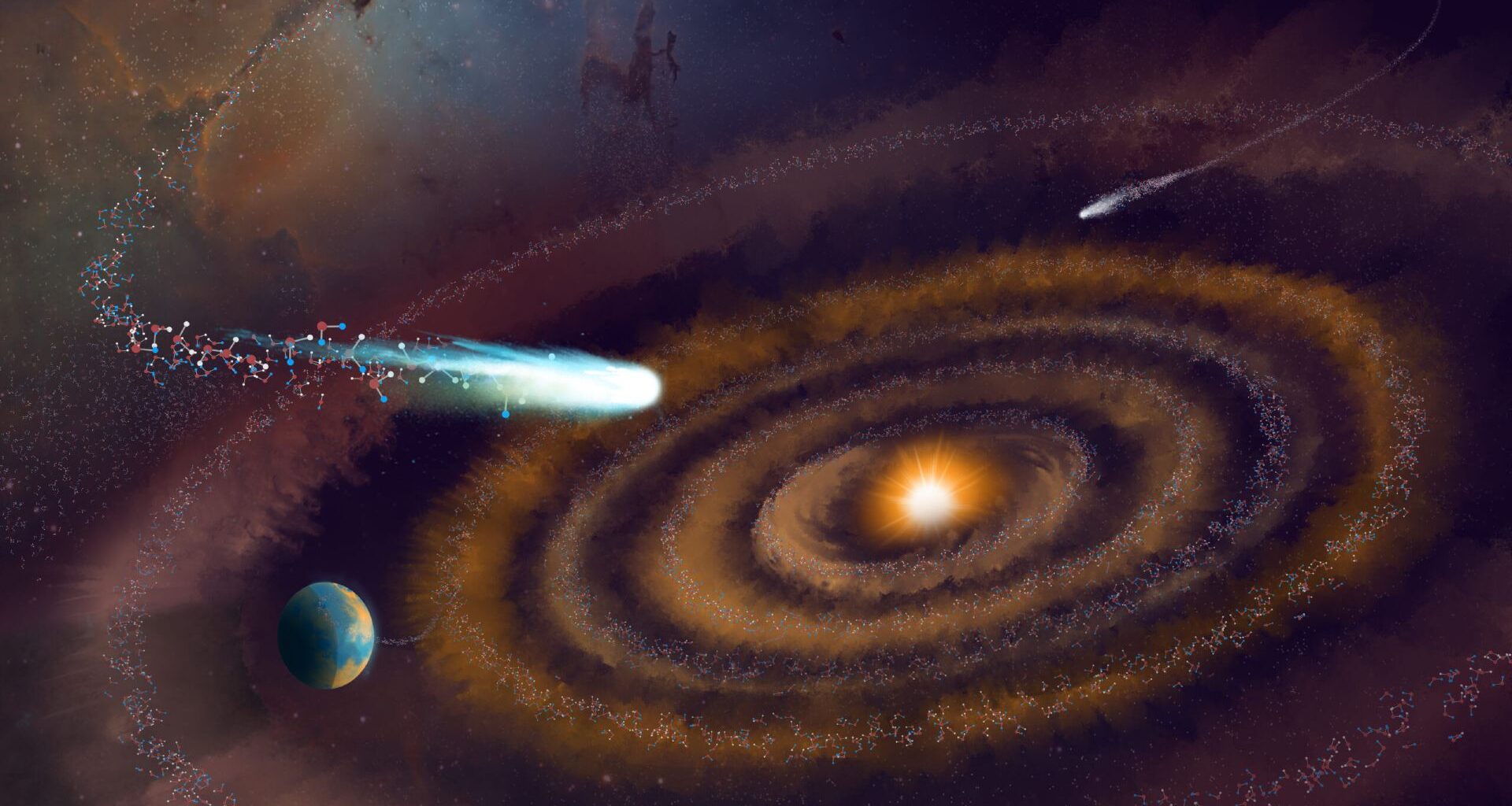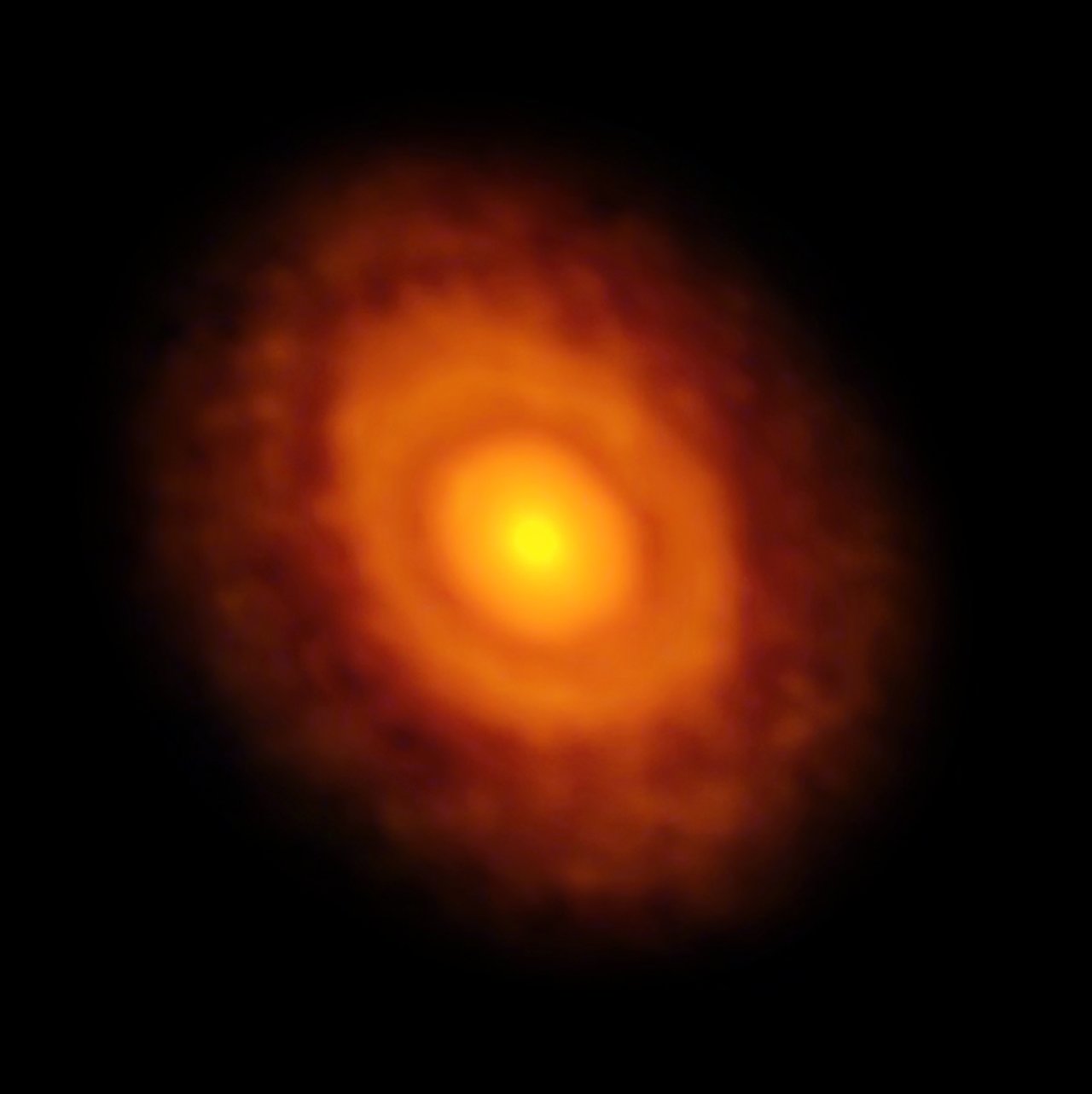The first-ever detection of heavy water in a planet-forming disk around a young star offers evidence that the water predates the star itself — and it appears this substance even originated in the cold, dark molecular cloud that gave birth to the star.
Scientists spotted the heavy water (which we’ll get into in just a moment) in the planet-forming disk of gas and dust around the young star V883 Orionis by ALMA, the Atacama Large Millimeter/submillimeter Array, which is a network of 66 radio dishes in Chile. V883 Ori is located 1,350 light-years away and is a member of a cluster of stars born out of the famous Orion Nebula.
Now, here’s what heavy water is.
You may like
Ordinary water is formed of two atoms of hydrogen and one atom of oxygen. Hydrogen is made from a single proton orbited by an electron. However, the nuclei of some atoms of hydrogen feature one proton and one neutron, too. We describe atoms with extra neutrons as an isotope of that element, and the isotope of hydrogen with one neutron is called deuterium. Its atomic mass is slightly higher than regular hydrogen, thanks to that extra neutron.
Heavy water, therefore, supplants its two regular hydrogen atoms with two deuterium atoms. We have heavy water in our own solar system, found for example in comets — and the ratio of heavy water to ordinary water in a cometary body can tell us about its formation history.
“Until now, we weren’t sure if most of the water in comets and planets formed fresh in young disks like V8783 Ori, or if it is pristine, originating from ancient interstellar clouds,” said John Tobin of the National Radio Astronomy Observatory in the United States in a statement.
The ALMA observations provided the answer. Violent shocks and outbursts from young stars destroys heavy water in a planet-forming disk, allowing it to reform as regular water. If this had happened around V883 Ori, the ratio of heavy water to regular water would be low, similar to what we find in our solar system.
Instead, however, the ratio as measured by ALMA in V883 Ori’s disk is the same as what is observed in clumps of molecular gas before they have formed stars or planets. In fact, the ratio is two orders of magnitude higher than what it would be if the water had been broken apart and reformed in the disk.
ALMA’s image of the planet-forming disk around V883 Orionis. (Image credit: ALMA (ESO/NAOJ/NRAO)/L. Cieza.)
“Our detection indisputably demonstrates that the water seen in this planet-forming disk must be older than the central star and formed at the earliest stages of star- and planet-formation,” said Margot Leemker, of the University of Milan, who led the study. “This presents a major breakthrough in understanding the journey of water through planet formation, and how this water made its way to our solar system and possibly Earth, through similar processes.”
This means the water is older than the star — it could actually be billions of years older, having sat in the molecular cloud that became the Orion Nebula all that time as ice coating tiny dust grains.
V883 Ori is only half a million years old, and water was first detected in its circumstellar planet-forming disk in 2023. No planets have yet been detected in that disk, although any comets that may have formed already will mirror this high ratio of heavy water. The star’s young age means there hasn’t been enough time yet for its ancient water to have been reprocessed by heating in the disk, but that time will soon come, as outbursts from the young star have already been observed — for example, in 2016, when ALMA studied the outburst’s effect on the snow line, or where water turns from vapor to ice, in V883 Ori’s disk.
“The detection of heavy water … proves the water’s ancient heritage and provides a missing link between clouds, disks, comets and ultimately planets,” said Tobin. “This finding is the first direct evidence of water’s interstellar journey from clouds to the materials that form planetary systems — unchanged and intact.”
The results were published on Oct. 15 in the journal Nature Astronomy.


